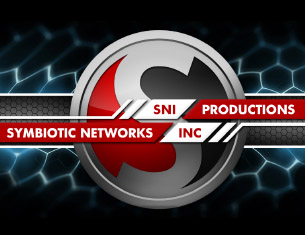Publisher's note: Brant Clifton uses, in part, the words of others to express that government corporate welfare can marginally work, but is rare, and is it right in his "bare knuckles" Conservative online publication known as The Daily Haymaker.
Thom tries on the Thesla for size: Above.
Between turkey-induced food comas this long weekend, I did a little reading.
THIS Bloomberg piece - about the PR successes of the automaker Tesla - caught my eye. It touched on a battle earlier this year in the North Carolina General Assembly:
Tesla Motors Inc. was in trouble in North Carolina. Prohibited from opening showrooms there, it was on the way to being unable to sell cars at all when the state Senate voted unanimously to block online auto sales.
Tesla delivered about 5,500 Model S in the third quarter, more than twice as many as it did in all of last year.
Then Tesla turned out a lobbying weapon that, in the home state of stock-car racing's hall of fame, spoke louder than money. It parked a Model S at the capitol and invited lawmakers and Republican Governor Pat McCrory to take it for a spin.
"When you accelerate it, it was the same sort of feeling I got when I test-drove a Mustang Boss back when I was probably 23 years old," House Speaker Thomas Tillis, 53, a Republican running for U.S. Senate, told the Raleigh News & Observer.
So ended the anti-Tesla legislation. Tillis's chamber never voted on it.[...]
Aaah. Give the kids some toys to play with, and you get what you need from Jones Street. Interesting.
Tillis and his leadership team defended their decision to back off the legislation as looking out for the consumers' best interests. A victory for the free market. A benchmark for the digital age and the age of entrepreneurship.
Car dealers have a different take:
Dealers counter their model is better for consumers, by giving them a consistent place to go for service, and for automakers, by taking sales costs off their balance sheets.
"With factory-owned stores, if the factory goes out of business, so does the store," said Tim Jackson, chief executive officer of the Colorado Auto Dealers Association, citing the examples of General Motors Co. brands that ended when the company was restructured in bankruptcy.
"If and when Tesla falls on hard times and shuts down, all of the service centers shut down at the same time because they are all factory-owned," he said.
[...]
The
Wall Street Journal also questions the spin about Tesla's victory in North Carolina as a win for the free market:
The list of the Obama Administration's industrial policy failures is long, from Solyndra to Fisker Automotive. But now we are hearing that one success redeems them all: Tesla Motors. TSLA +0.27% Tesla's share price has soared this year on rave reviews for its electric car, growing sales and its first quarterly profit.
Rarely noted is how much this profit is a function of government subsidy and coercion. So let's take apart Tesla by the numbers, if only to give our reader-taxpayers a better sense of what they've paid to make Tesla's owners rich.
The decade-old Tesla debuted its first product, the Roadster, in 2006. With a base price of $109,000, it was discontinued before it hit 2,500 sales. Tesla introduced its Model S a year ago and had sold an estimated 9,650 at a bargain $70,000 through April. By contrast, Ford sold 168,843 F-series pickup trucks in the first quarter alone.
Tesla wouldn't have sold even that many cars without the extraordinary help of government. In 2009 the company received a $465 million Obama loan guarantee, supplemented last year by a $10 million grant from the California Energy Commission.
That money has underwritten Tesla's engineering and manufacturing, but federal and state governments also subsidize the purchase of Tesla products. Any U.S. buyer of a Tesla car qualifies for a $7,500 federal tax credit, while states like Colorado throw in up to $6,000 more in state income-tax credits. Taxpayers pay first so Tesla can build the cars and again to help the wealthy buy them.
These subsidies are important enough to Tesla that its website features an "Incentives" section directing buyers where to look for their states' electric-vehicle benefits - rebates, free parking, exemptions from state sales tax, use of high-occupancy lanes, and the like. Buyers from states that offer no incentives get this Tesla message: "Want to help make EV [electric vehicle] incentives a reality in your area? Encourage your local or state representative by calling or sending them a letter."
Tesla's biggest windfall has been the cash payments it extracts from rival car makers (and their customers), via its sale of zero-emission credits. A number of states including California require that traditional car makers reach certain production quotas of zero-emission vehicles - or to purchase credits if they cannot. Tesla is a main supplier.
A Morgan Stanley MS -0.35% report in April said Tesla made $40.5 million on credits in 2012, and that it could collect $250 million in 2013. Tesla acknowledged in a recent SEC filing that emissions credit sales hit $85 million in 2013′s first quarter alone - 15% of its revenue, and the only reason it made a profit.
Take away the credits and Tesla lost $53 million in the first quarter, or $10,000 per car sold. California's zero-emission credits provided $67.9 million to the company in the first quarter, and the combination of that state's credits and federal and local incentives can add up to $45,000 per Tesla sold, according to an analysis by the Los Angeles Times.
One irony is that rival car makers - even those making electric hybrids or gasoline subcompacts - don't get the same benefit from zero-emissions mandates. As environmentalist Bjorn Lomborg notes, manufacturing and charging electric cars over their life cycle can produce more carbon than small, gas-powered vehicles. Yet Tesla is cashing in because of the policy bias for fully-electric cars.
Another irony is that the main beneficiaries of this electric-car largesse belong to - well, the 1%. Tesla co-founder Elon Musk is already a successful entrepreneur, and his estimated net worth has soared past $4 billion thanks to the IPOs of Tesla and SolarCity.
Hmmm. Solar City. Musk has an appreciation for solar and other forms of alternative energy. That gives
him something in common with Speaker Thom. MORE:
Also realizing Tesla IPO windfalls are the elite of Silicon Valley venture capital: the Westly Group (whose principal, Steve Westly, is an Obama campaign bundler), Draper Fisher Jurvetson, and VantagePoint Venture Partners. Other paupers in the Tesla venture include or have included Daimler, Fidelity Investments, Google co-founders Sergey Brin and Larry Page, Hyatt heir Nick Pritzker, and former eBay president Jeff Skoll. The state-owned Abu Dhabi Water & Electricity Authority last year booked a $113 million profit selling its share of Tesla. You're welcome.
Tesla isn't oblivious to the politics of all this, and on Wednesday it said it had fully repaid its government loan. That's good, since Tesla's long-term prospects are far from certain. The major auto makers will soon have their own zero-emissions vehicles, which Mr. Musk says will end Tesla's credits boom by year end. Analysts are also warning that Tesla has yet to show it can sell its very pricey car to a mass market.
***
Tesla's investors claim this taxpayer support is worth it if it creates a new electric-car company, and for them it is. But such a success must still be measured against other taxpayer losses and misallocated capital.
And even if Tesla's cars do sell, the policy question is why billionaires in California couldn't have financed the business themselves. Why should middle-class taxpayers whose incomes are falling still pay to subsidize the purchase of cars that only the affluent can afford, and then partly as a gesture of their superior environmental virtue? When does the rest of America get its return on Tesla's profits? [...]
It's hard to understand why Tesla doesn't set up a showroom or two in the Tar Heel State. Greensboro has a dealership for Ferraris and Maseratis - two well-known high-end luxury toys.
Another concern about Tesla not having an actual brick-and-mortar presence in North Carolina? THIS:
In the last couple of months, electric cars from Tesla Motors (TSLA) have had three collision-related battery fires that were widely covered by the media. Last week, the NHTSA decided to conduct a formal investigation of these incidents. While Tesla's CEO Elon Musk immediately went on the offensive arguing that Tesla's BEVs have a lower fire risk than gasoline powered cars, the question an increasing number of investors are asking is "Why has Tesla had three battery fires in a fleet of 17,000 BEVs while Nissan hasn't had any fires in its fleet of over 90,000 BEVs?" The answer is simple. Tesla's battery decisions significantly increased battery risks for both the customer and the company.[...]
How about those battery decisions? I found some
interesting information on said batteries:
The problem with the Tesla and all these cars is the short range before recharging. The Tesla Model S is supposed to go 300 miles under ideal conditions. But as the New York Times found out in its test, that means you have to stop for an hour full charge after about 250 miles.
So a 500-mile trip would add another hour to the time. By contrast, filling up a typical sedan takes less than 10 minutes.
























